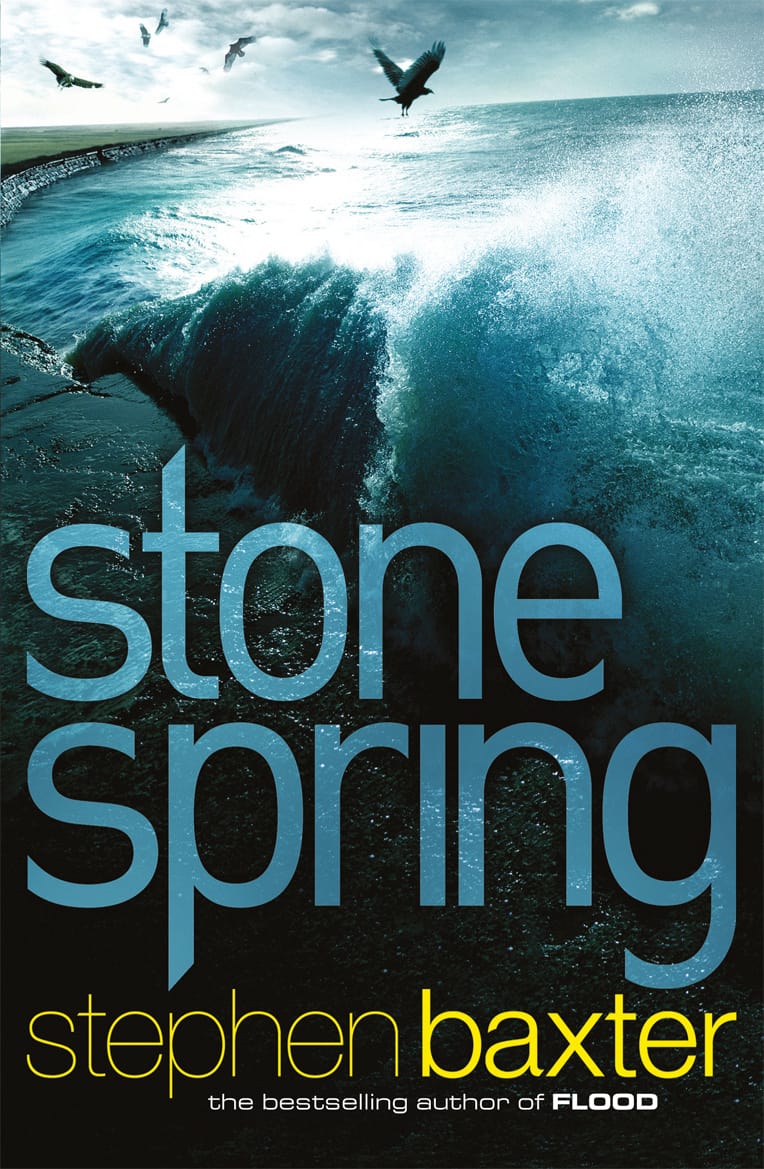week 32 / 2025: conspiracy culture
There's nothing like looking at the disposable popular culture of three decades previous for reminding you that there's nothing new under the sun, and that history moves in waves rather than an arc.

“I had gotten frozen by the way you walked / by the love that you gave, by that look on your face / it's a cover-up, I know everything…”
This has been a slow week—partly because the circumstances made a slow week possible, and partly because the circumstances made a slow week desirable; it’s been a busy couple of months! This week hasn’t been a total holiday, by any means, but I dialled back a bunch of commitments as far as I could, in favour of taking it a bit easy.
Thanks to a chance encounter in a second-hand store a few weeks previous, “taking it easy” has meant “working my way through a DVD set of series 1 of The X-Files”, which has had me thinking about conspiracy theories, and the enantiodromia of worldviews.
My main point is that the existence of The X-Files as a mainstream and hugely popular pop-cultural artefact of its era is indicative of an epistemological tendency: more simply, the adventures of Mulder and Scully did not inculcate us with the notion that governments and corporations were doing nefarious stuff in secret, but rather relied on our already assuming that to be the case.
Furthermore, as watching these shows will remind you, this was a time when “the internet” was a thing that most people might have read about in their regular newspaper or magazine, but didn’t themselves use regularly, or indeed at all; nor did “the internet” look or feel anything like the thing we label with that term today.
There’s a tendency to blame the current resurgence of conspiracy theory on social media, but while I suspect it’s playing an accelerant role, the Nineties—and in particular the earlier half of that decade—is a clear illustration that you can have widespread suspicion of authority without the need for smartphones or apps.
We can also think about this as one of many yin-yang culture-phenomenal cycles. If we think of the mid-Nineties as the trailing edge of a peak in conspiracy theory (at least in what we might call “the West”), and our present moment as the leading edge of a new peak, what do we see midway between those points? The late-Noughties-to-Teens high-water mark of New Atheism, of course.

Now, this is why the yin-yang is such a useful visual figure—because you might quite rightly be thinking “hang on a minute, what about the 9/11 truthers, or the people who insisted that Barack Obama was some sort of Islamic Manchurian candidate?” Like most cultural attitudes, conspiracy theory never goes away; it’s always present, even against the backdrop of its evidence-obsessed opposite, just like the little black dot that’s deep in the fattest part of the white teardrop. This is enantiodromia: the omnipresent potential of any given phenomenon or circumstance to suddenly, even at the seeming peak of its power and ubiquity, reverse into its exact opposite.
There’s an interesting conversation to be had here about the political valence of conspiracy theory, which seems also to change over time, but at a slower frequency—but that conversation demands more thought than I have given the topic this week! But what fascinates me right now is the way that the progeny of the New Atheist moment, namely the so-called rationalist scene, are so deeply entangled in not just the conspiratorial thinking of the moment, but in some of the most profoundly irrational beliefs.
Again, this is the crucial lesson of enantiodromia: it’s not a case of (for instance) the conspiracy theorists being pushed aside or diminishing in influence during the rise of the rationalists, and then the polarity switching again. Rather, each position arises organically from out of the other—and for the bearers of those positions, there will often be a sense of perfect continuity and coherence of beliefs over time where, to an outside observer, there seems instead a complete inversion, reversal or contradiction. The rationalists themselves become conspiracy theorists, and vice versa.
I think it’s important to recognise this dynamic, and to recognise that it applies to everyone to a greater or lesser degree. I certainly rode the rollercoaster described above: from a Mulder-esque desire to believe, through a New Atheistic fixation on the rationalistic, quantifiable and empirical, and on to what some friends have lately described as a distinctly mystical attitude. (You know who you are!) From the point of vantage that is the inside of my own skull, that whole trip makes perfect sense, looks straight and contiguous—and in one sense, I suppose it is. But in another sense, it’s not straight and contiguous at all.
Crucially, it’s not anywhere near as individual as it feels, either: even a very shallow glimpse at the cultural history of the last few decades (quod erat demonstrandum) shows us that there’s a sine-wave dynamic which, even if it’s essentially emergent in character (i.e. shaped by millions of tiny, independent actions) is operating at the scale of populations.
The trite takeaway here would be “futurists should pay attention to history”; of course they should, as should everyone else. The more interesting takeaway, then, is to note that so many people—futurists very much included!—pay little or no attention to history at all, and to wonder why that is, and whether it was always so.
reading
Stephen Baxter is perhaps best known for his mind-warping space opera novels, in which his grasp of advanced physics and cosmology enables him to postulate stuff like entire civilisations going to war with each other via temporal wormholes or across alternative universes or suchlike. Personally, I’ve always preferred his work that pays close attention to Earth and its deep history, perhaps because it better showcases his deep streak of Romanticist melancholy, with which I have a lot of sympathy.

I’ve had a copy of Stone Spring since it was published circa 2010—I know this for sure, because it’s an ARC that still has the press release tucked behind the back cover—but somehow I never got around to reading it before. It’s essentially a family saga story set on Doggerland, the now-sunken landmass beneath the North Sea between the British Isles and the north-west coastline of mainland Europe: prehistoric peoples getting into assorted mishaps and disagreements with one another, but also with their changing environment.
The human drama stuff is OK, I guess; Baxter’s perhaps a little better at writing believable characters than the average sf writer of his generation, but not wildly so. But this book in particular reminds me of the argument that the point of generic forms, particularly in literature, is to provide a rope or handrail for the reader to follow through the worldbuilding. The appeal of Stone Spring is the appeal of a well-researched (yet still entirely conjectural) tour through a prehistoric landscape, combined with the sublimity kick that comes with the deep-time setting; the “camera” of Baxter’s narrative follows the characters, of course, but it’s dwelling far more on the landscape, so to speak.
As to that Romanticist melancholy, Baxter’s portrayal of different prehistoric lifeways herein doesn’t do much to disguise a rather despairing view of what would eventually become the urban and the modern. But if you’ve never read Baxter, and want to know where to start, I always recommend his Evolution: it’s perhaps his bleakest, but perhaps also his best.
a clipping
While the source essay is overall just another entry in the “how social media fucks with your head” genre—albeit perhaps a better than average example, if you’re still in the market for such?—these few paragraphs make an interesting and useful argument about narrative as temporal regulator and memory palace:
The opposite of a maze is a route, and a route through time is a story. This is because stories are linear and syntagmatic — each moment of the tale semantically follows from the previous — and this collective meaningfulness anchors the whole thing in memory. This is why studies have consistently found that people are much better at memorising information when it’s presented in narrative form.
The memorable and sequential nature of stories makes them good timekeepers. As such, the way we make sense of time is through emplotment: by turning time into stories. It’s why research finds that people who are similarly engaged in a story will tend to converge in their estimates of how much time has elapsed. If we can’t turn a duration into a story, we struggle to keep track of it.
ticked off
- Six hours on PROJECT VIENNETTA. (One of the stories for this set needed a near-total rewrite.)
- Six hours on PROJECT PORTON. (We’re at the “edit tennis” phase with this one.)
- Five hours of PROJECT PONTIF. (Simmering, simmering.)
- Four hours of admyn. (Death’n’taxes, bro.)
- Two hours on PROJECT FLATPACK. (Dotting Is, crossing Ts.)
- Ten hours of undirected writing and reading.
Man, I can’t even do “taking a week off” right, can I? The last seven days have felt so lazy, but I’ve done around 75% of my usual hours… ah, well. Again, this is why we track this stuff: know thyself!
kinmaking
This week I had a long-overdue catch-up with Tom Hunter, med-tech dissemination mastermind at King’s College, director of the Arthur C Clarke Award, and very old friend; also a quick catch-up with Cat Tully of SOIF.
I note I’ve been a bit slack on the kinmaking of late; one can blame the season, to some extent, but I need to make more effort on talking to new people.
Right, that’s all for this week. I hope all’s well with you, wherever you may be.
This has been the Worldbuilding Agency weeknotes for Week 32 of 2025. Thanks for reading! If you've enjoyed them, it's free to subscribe. If you are already subscribed, please send to a friend who you think might also like it!





Comments ()